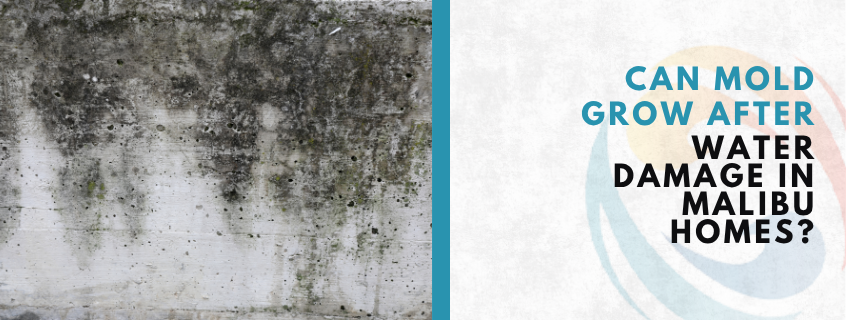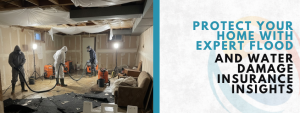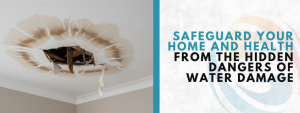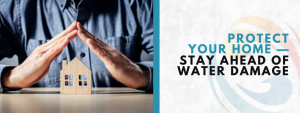
Living in Malibu means beautiful beaches, sunny skies, and cozy homes tucked away near the ocean. But all that beauty comes with its fair share of challenges—especially when water damage happens. Whether it’s from a burst pipe, a leaky roof, or heavy rain, water can quickly sneak into places it doesn’t belong. And when that happens, mold is never too far behind.
If you’ve ever asked yourself, “Can mold grow after water damage in Malibu homes?” the answer is a loud and clear: yes. Mold loves damp places, and when water sneaks into your walls, floors, or ceilings, it’s like giving mold an open invitation to move in and make itself at home. The risks of mold after water damage can be significant.
Understanding the risks of mold growth and knowing what to do after a flood at home is not just helpful—it can protect your health, your family, and your property. Let’s walk through everything you need to know, in plain and simple terms, so you can feel confident and ready if water ever finds its way into your Malibu home.
Mold doesn’t wait around. It can start growing in as little as 24 to 48 hours after water damage happens. That means acting fast is key. Here’s how you can recognize, stop, and prevent mold after water damage in your home.
Why Mold Is a Big Deal in Malibu Homes
Malibu’s climate is humid, especially near the coast. While the sea breeze feels refreshing, it also means moisture is always in the air. That moisture creates the perfect conditions for mold to thrive when water damage occurs.
Here are a few reasons mold is such a serious issue in Malibu:
- Salt air holds humidity: Even if your home is well-sealed, salty, moist air can sneak in and keep surfaces damp.
- Hidden water spots: Malibu homes often use stylish wood panels, wallboard, or stone—materials where water can hide easily.
- High-value properties: A small mold problem can lead to large repair bills when expensive materials or finishes are involved.
If you’re dealing with flooding or water leaks, knowing what to do after a flood at home should be the first step in your mold prevention plan.
Signs Mold Might Be Growing After Water Damage
Mold doesn’t always appear as big black spots. Sometimes, it hides in the walls, under floors, or behind cabinets. Here’s what to watch for:
Sight:
- Black, green, or white patches
- Bubbling paint or wallpaper
- Water stains that keep spreading
Smell:
Being aware of the potential for mold after water damage is crucial for maintaining a safe and healthy living environment.
- Musty, earthy odors that won’t go away
Feeling:
- Allergies acting up indoors
- Coughing, sneezing, or itchy eyes that improve when you leave home
When these signs show up, think about what’s changed recently. Did your home flood? Did a pipe leak? If yes, it’s time to act fast. Remember, a big part of what to do after a flood at home is checking for hidden mold.
The First 24 Hours: What To Do Right Away
When water damage strikes, every minute counts. Here’s a simple list of what you should do as soon as you notice water damage:
- Turn off the water source if it’s still leaking.
- Shut off the electricity in affected areas to prevent shocks.
- Call a water damage restoration company immediately. Speed matters.
- Use towels, buckets, or a wet/dry vacuum to soak up what you can.
- Open windows and use fans to get air moving.
- Remove rugs, furniture, and belongings from the wet area.
- Take photos and document everything for insurance claims.
These steps are vital. You’ll also want expert help, and you can trust professionals like Malibu’s trusted water restoration team to handle the cleanup the right way.
How Mold Spreads Fast Without Warning
Mold doesn’t need sunlight. It only needs moisture, warmth, and a food source like drywall, carpet, or even wood panels. Once mold spores land on a damp surface, they begin to grow—and that growth happens quickly.
Here’s a breakdown of mold’s timeline:
| Time After Water Damage | What Happens |
| 0–24 Hours | Moisture soaks into materials. Mold spores activate. |
| 24–48 Hours | Mold starts growing, usually hidden inside walls or floors. |
| 48–72 Hours | Visible mold appears, and odors develop. Health effects may begin. |
| 72+ Hours | Mold colonies spread fast. Damage becomes structural. |
If you want to avoid mold damage, one of the most important things you can remember is what to do after a flood at home—and that means starting cleanup and drying right away.
Places Mold Loves to Hide in Malibu Homes
Mold is sneaky. It doesn’t always grow in plain sight. Here’s where it tends to hide:
- Behind wood panel walls
- Under wet carpet or hardwood floors
- Inside air ducts or HVAC systems
- Behind kitchen cabinets
- Inside insulation or wall cavities
- Around window frames and door jambs
These hidden areas often go unchecked after water damage. That’s why hiring a professional with mold detection tools is a smart move.
Types of Mold You Might Find
Not all mold looks the same, and not all of it is harmless. Here are some common types of mold found in homes:
Cladosporium
- Dark green or black
- Grows on wood and fabrics
Penicillium
- Blue, green, or white
- Spreads quickly and causes musty smells
Aspergillus
- Yellow, white, or black
- Found on walls and insulation
Stachybotrys (Black Mold)
- Dark black or green
- Toxic and dangerous; needs urgent removal
Knowing what to do after a flood at home includes understanding which type of mold you may be facing and how it affects your health and home.
Health Risks of Mold Exposure
Mold can affect your health, especially for children, seniors, and people with asthma or allergies.
Common symptoms include:
- Coughing or wheezing
- Itchy, watery eyes
- Runny nose or sinus problems
- Skin rashes
- Headaches
Long-term exposure can be more serious, leading to respiratory infections or other complications. That’s why early action matters. By following the right steps for what to do after a flood at home, you’re also protecting your family’s health.
What You Can Do To Prevent Mold
Even if your home hasn’t been flooded yet, it’s a good idea to be ready. Here’s a checklist of mold prevention tips:
Prevention Tips:
- Fix leaks right away (roof, pipes, windows)
- Keep humidity below 50% with dehumidifiers
- Use exhaust fans in kitchens and bathrooms
- Clean and inspect gutters regularly
- Seal windows and doors properly
- Inspect for water spots during heavy rain
If a flood does happen, remember that what to do after a flood at home always includes drying everything as quickly as possible.
Does Insurance Cover Mold After Water Damage?
Here’s what most homeowners in Malibu should know: not all insurance plans cover mold. It depends on the cause of the water damage.
Covered by insurance:
- Burst pipes
- Sudden leaks
- Overflowing appliances
Not usually covered:
- Poor maintenance
- Long-term leaks
- Flooding (unless you have flood insurance)
To be safe, review your policy or speak to your insurance agent. Keeping clear records and photos is part of what to do after a flood at home for smooth insurance claims.
How Professionals Handle Water Damage and Mold
You might think you can clean up the water and be done—but mold can still grow behind the scenes. That’s where professional help makes a difference. Teams trained in mold remediation follow a proven process:
Steps Pros Take:
- Inspection and moisture mapping
- Removal of standing water
- Drying with industrial fans and dehumidifiers
- Mold testing and air sampling
- Cleaning and sanitizing
- Repairs and reconstruction
You don’t have to handle it all alone. Expert water damage restoration services can protect your home from future mold threats.
Why Acting Fast Can Save You Thousands
The longer mold grows, the worse it gets—and the more expensive it is to fix. Mold can damage:
- Drywall and wood paneling
- Flooring and carpets
- Furniture and electronics
- HVAC systems
Fixing the problem early is much cheaper than a full gut-and-rebuild project. If you’re unsure what to do after a flood at home, call the experts right away.
Customer Story: A Moldy Surprise in Malibu
A Malibu family came back from a weekend trip to find their kitchen flooded from a dishwasher leak. They cleaned the floor and opened the windows, thinking the job was done. But within a week, the cabinets started smelling musty.
They called in professionals, who found black mold inside the walls and under the floorboards. It took weeks to fully remove. If they had known what to do after a flood at home—including drying hidden areas and calling for help sooner—they could have avoided the stress and expense.
Let their story be a reminder: mold doesn’t wait.
Closing Thoughts: What To Remember
Here’s the big picture: Yes, mold can grow after water damage in Malibu homes—and it can do so quickly. Knowing the warning signs and acting fast can save your home, your health, and your wallet.
Remember these key takeaways:
- Mold starts growing fast—within 24 to 48 hours.
- Always dry and inspect hidden areas after water damage.
- Learn what to do after a flood at home before it happens.
- Use professionals for safe mold removal.
- Prevention and fast action are your best defenses.
If you ever experience a water emergency, don’t wait. Call in the pros. Your home deserves the best protection, and you deserve peace of mind. For reliable help, check out this trusted water damage resource to get started today.
Frequently Asked Questions About Mold After Water Damage in Malibu Homes
How do I know if mold is growing in my home after water damage?
You might notice a musty smell, see black or green spots on walls or ceilings, or experience allergy-like symptoms such as sneezing or itchy eyes. Mold often hides behind walls, under flooring, or in damp corners, so if your home recently had water damage—even if it’s dry now—there’s a chance mold could be growing out of sight.
What should I do immediately after a flood or water leak in my Malibu home?
First, stop the water source and turn off the electricity in the affected area. Then, start drying everything you can using towels and fans, and remove rugs or wet items. Most importantly, call a professional water damage restoration company right away. Knowing what to do after a flood at home helps reduce the chances of mold taking hold.
Can I remove mold myself, or do I need professional help?
For small areas (less than 10 square feet), you might be able to clean surface mold with proper safety gear and cleaners. However, if the mold is hidden, keeps returning, or affects large areas, it’s best to hire professionals. They have tools and training to safely detect, remove, and prevent mold without risking your health or spreading spores.
Does homeowners’ insurance cover mold damage after a water leak or flood?
It depends on the cause of the water damage. If it was sudden—like a burst pipe or appliance overflow—your policy might cover mold removal. But if the leak was due to poor maintenance or long-term moisture issues, it likely won’t be covered. You should review your policy and ask your agent directly to understand your coverage.
How can I prevent mold from growing after water damage in the future?
Fix leaks right away, use dehumidifiers, and ensure good ventilation in your kitchen, bathrooms, and laundry areas. After any water incident, act quickly to dry all surfaces within 24–48 hours. Part of what to do after a flood at home is checking behind walls and under floors, where moisture can hide and feed mold growth without you knowing.






